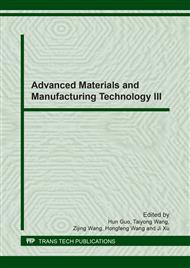p.219
p.225
p.235
p.245
p.252
p.261
p.271
p.279
p.293
Research on Milling Force in Ultrasonic Assisted End Milling of Titanium Alloy Thin-Walled Parts
Abstract:
Hard machinability of titanium alloy material and poor stiffness of thin-walled part restricted the extensive applications of titanium alloy thin-walled component in aerospace engineering. In order to increase geometric accuracy, a method of ultrasonic vibration assisted (UVA) end milling technology with workpiece vibrating in feeding direction was put forward in this paper, and the corresponding milling force characteristics in UVA milling of titanium alloy TC4 thin-walled workpiece were researched. Through theoretical analysis, the path of cutter tooth in UVA milling was analyzed. The important factors that affect milling force are obtained with the signal to noise ratio analysis. Results show that the radial cutting force in UVA milling is smaller than that in traditional milling. Cutting force fluctuate in high frequency when treated ultrasonic vibration. And the axial cutting feed is the core factor that affects the milling force. The research provides a certain reference for the precision milling of titanium alloy thin-walled parts.
Info:
Periodical:
Pages:
252-260
Citation:
Online since:
February 2018
Authors:
Price:
Сopyright:
© 2018 Trans Tech Publications Ltd. All Rights Reserved
Share:
Citation:


